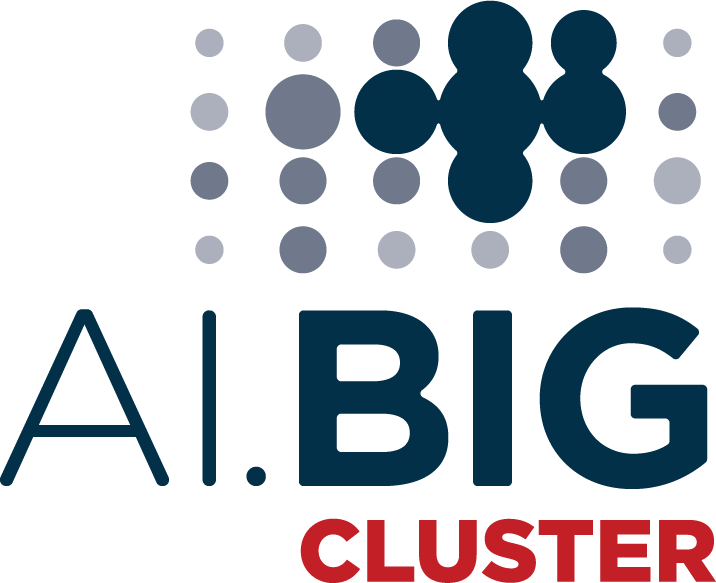DESCRIPTION
This short course on Big Data Analytics for Natural Disaster Management (NDM) provides a comprehensive overview and in-depth presentation of advanced technologies involved in the acquisition and analysis of Big Data for NDM. NDM can be greatly improved by developing automated means for precise semantic mapping and phenomenon evolution predictions in real-time. Several extreme data sources can significantly help towards achieving this goal: a) autonomous devices and smart sensors at the edge, equipped with AI-capabilities; b) satellite images; c) topographical data; d) official meteorological data, predictions or warnings published in the Web; and e) geosocial media data (including text, image and video). Such heterogeneous data sources provide a prime extreme data example: a) they are diverse; b) voluminous; c) fast and frequently updated; d) complex; e) multilingual; f) have very disperse sources (satellite, drone, sensors, social media, maps); and h) have extreme values.
The course consists of ten lectures, covering important topics and presenting state-of-the-art technologies in: a) Big Data acquisition using sensors, drones, satellites, the Web and social media platforms; b) Big Data analysis based on Deep Learning; c) accurate phenomena modeling; and d) analysis, forecasting and risk management for improved NDM. The presented technologies find practical application in developing an advanced NDM support system that dynamically exploits multiple data sources and AI technologies for providing an accurate assessment of an evolving crisis situation.
COURSE MATERIAL
Please find below the course material, including PDF presentations and videos of each lecture.
-
- Ioannis Pitas, Sensing and Big Data Analytics for NDM
- Nikolaos Militsis, Drone imaging for NDMs
- Matthaios-Dimitrios Tzimas, Forest fire detection and fire/burnt region segmentation on drone images
- Resch Bernd, Multimodal Analysis of Geo-social Media Data for Improved Disaster Management: From Science to Digital Practice
- Pauline Delporte, Improve flash flood modeling in urban areas using High Resolution hydrodynamic and machine learning models
- Evangelos Spatharis, Simulation of forest fires and floods
- Vasileios Mygdalis, Privacy protection in Natural Disaster Management
- Francesca D’Agresti, Data Storytelling and Big Data value chain in Natural Disaster Management
- Evgenios Vlachos, Flood region segmentation on drone images
PROGRAM
|
Time (EET) |
Lecture |
Lecturer |
|
08:35-09:05 |
Sensors and Big Data Analytics for NDM |
Ioannis Pitas (AUTH) |
|
09:05-10:00 |
Drone imaging for NDMs |
Nikolaos Militsis, (AUTH) |
|
10:00-11:00 |
Forest fire detection and fire/burnt region segmentation on drone images |
Matthaios-Dimitrios Tzimas (AUTH) |
|
11:00-11:30 |
Break |
|
|
11:30-12:30 |
Multimodal Analysis of Geo-social Media Data for Improved Disaster Management: From Science to Digital Practice |
Resch Bernd (PLUS) |
|
12:30-13:30 |
Improve flash flood modeling in urban areas using High Resolution hydrodynamic and machine learning models |
Pauline Delporte (CS GROUP) |
|
13:30-14:00 |
Simulation of forest fires and floods (demo presentation) |
E. Spatharis (AUTH) |
|
14:00-15:00 |
Lunch Break |
|
|
15:00-16:00 |
Privacy protection in Natural Disaster Management |
Vasileios Mygdalis (AUTH) |
|
16:00-17:00 |
Data Storytelling and Big Data value chain in Natural Disaster Management |
Francesca D’Agresti (Engineering) |
|
17:00-17:30 |
Break |
|
|
17:30-18:30 |
From Cloud to Edge through Microservices |
Massimo Villari (UNIME) |
|
18:30-19:30 |
Flood region segmentation on drone images |
Evgenios Vlachos (AUTH) |
WHEN?
The course will take place on Tuesday, 03 December 2024.
WHERE?
Online event
All lectures will be delivered online via Zoom (Passcode: 114050).
REGISTRATION
CS/ECE/EE/AI students/scientists, engineers as well as AI enthusiasts from other scientific disciplines having the necessary mathematical background are welcomed to register free of charge on a First-Come-First-Serve basis.
Please click to the following button.
For AIDA students only: On the top of the above registration, we strongly encourage you to also enroll in this course through the AIDA website, so that a successful attendance of this course appears in the AIDA Certificate of Course Attendance.
SUPPORTED BY
This short course is supported by TEMA, AI.BIG cluster & AIDA.



LECTURES
Ioannis Pitas, Sensing and Big Data Analytics for NDM
Abstract: Natural Disaster Management (NDM, e.g., for wildfires, floods) can be greatly improved by automating precise semantic 3D mapping and disaster evolution prediction to achieve NDM goals in near-real-time. To this end, many heterogeneous extreme data sources must be analyzed and fused: smart drone sensors (e.g., RGB, RGBD and thermal cameras, Lidars, motion sensors), emergency vehicle sensors (similar sensors but equipped with more computing power) and in-situ sensors (smoke sensors, moisture sensors, water flow meters), meteorological sensors, remote sensing data, topographical data, and geosocial media data (text, image and videos). The lecture focus is on a) how to efficiently manage such a heterogeneous and mobile sensor network, including intelligent sensor placement and b) how to analyze the resulting data having extreme nature, due to their varying resolution and quality, very large volume and update rate, different spatiotemporal resolutions and acquisition frequencies, real-time needs and multilingualism. Extreme data analytics can help developing an integrated, ground-breaking NDM platform, focusing on real-time semantic extraction from multiple heterogeneous data modalities and sources, on-the-fly construction of a meaningful semantically annotated 3D disaster area map, prediction of disaster evolution and improved communication between service providers and end-users, through automated process triggering and response recommendations. Semantic analysis computations will be distributed across the edge-to-cloud continuum, in a federated manner, to minimize latency. Extreme data analytics will be performed in a trustworthy and transparent way, by greatly advancing state-of-the-art AI and XAI approaches. The constantly updated 3D map and the disaster evolution predictions will form the basis for an advanced, interactive, Extended Reality (XR) interface, where the current situation will be visualized and different response strategies will be dynamically evaluated through simulation by NDM personnel. An innovative, scalable and efficient implementation platform will provide precise NDM support, based on extreme data analytics.
Matthaios-Dimitrios Tzimas, Forest fire detection and fire/burnt region segmentation on drone images
Abstract: With climate change on the rise, new challenges for Natural Disaster Management (NDM) arise, leading to rapid advancements in Deep Neural Networks (DNNs), specifically in wildfire scenarios. Forest fire detection and segmentation and burnt area segmentation are critical tasks that require DNNs to achieve precise decision-making in near real-time. Given the complex and dynamic conditions of wildfires, the majority of data is sourced from drone imagery, which facilitates more efficient detection and monitoring of fire behavior. Additionally, due to the spatial variability of fire, specific metrics like image-level mean Average Precision (ImAP) can yield better results, providing better insight into the capabilities of DNNs. Computer vision methodologies can help boost results significantly by efficiently pre-processing images (e.g., HSV, RGBS). These concepts, in addition to the already powerful state-of-the-art DNNs (e.g., PIDnet, CNN I2I), can enable real-time DNN inference providing vital insight into NDM strategies.
Abstract: Modeling flash floods in urban areas with complex topography is always challenging. Considering fine-scale hydrodynamic 2D shallow water model to perform simulations requires a lot of manual or semi-automatic data processing before being able to run simulations.
In the context of the ExtremeXP project funded by the European Commission we assess the role of machine learning to improve the simulation and nowcasting (forecast with short term horizon) of flash flood events in the city of Nîmes in the South of France. First, we prepare all relevant datasets to design a fine scale 2D hydrodynamic model and then we calibrate it on several historical flood events. Once this model is calibrated and validated, we use it as a reference for conducting several scenarios of improvements using machine learning model. Two kinds of scenarios are analyzed. In the first kind lie all the machine learning techniques that would facilitate the design of the hydrodynamic model by either improving the resolution of input data or reducing the necessary data transformation processes. The second kind of scenario consists in designing surrogates for the reference hydrodynamic model itself for nowcasting flood propagation during an event.
Evangelos Spatharis, Simulation of forest fires and floods (demo presentation)
Abstract: By using Unreal Engine for the creation of virtual environments we are able to simulate fire and flood scenarios with high accuracy and by using virtual UAVs we collect big virtual datasets. Mixing the virtual data with real-world data and training state-of-the-art machine learning models we hope to be able to detect real-world fires and floods with high precession.
Francesca D’Agresti, Data Storytelling and Big Data value chain in Natural Disaster Management
Abstract: This lecture explores Data Storytelling and the Big Data value chain in the realm of Natural Disaster Management, emphasizing the importance of communicating complex data in accessible ways to drive better decision-making. It highlights the potential of big data in enhancing disaster preparedness, response, and mitigation efforts, and focuses on how data can be leveraged across multiple stages of disaster management. The growing frequency and severity of natural disasters is addressed, underscoring the need for comprehensive data analysis to understand their impacts on infrastructure, communities, and ecosystems. Data Storytelling emerges as a critical tool to transform raw data into engaging narratives, making information actionable and comprehensible for diverse stakeholders such as governments, emergency services, and the public. With effective data narratives, decision-makers can prioritize interventions, allocate resources more efficiently, and build public trust. The lecture also presents the Big Data value chain—comprising key phases such as data acquisition, storage, processing, analysis, visualization, and interpretation—and emphasizes its role in improving disaster management strategies. Each step in this chain contributes to early warning systems, situational awareness, risk assessment, and resource allocation. For example, predictive analytics derived from satellite imagery, IoT sensors, and social media data can provide early warnings to at-risk populations, while real-time data feeds support better coordination during relief operations. Challenges such as data privacy, interoperability, and the digital divide will also be examined, as these factors can limit the effective use of data in disaster management. Case studies showcasing the use of big data in past events, such as hurricane forecasting models or wildfire monitoring, will be incorporated to demonstrate practical applications. Participants will engage in interactive discussions to explore data storytelling techniques and evaluate the use of big data tools for designing more resilient communities. By the end of the lecture, attendees will gain insights into the synergies between data storytelling and the big data value chain, along with practical skills for applying these concepts to real-world disaster scenarios. They will leave with a deeper understanding of how to turn complex data into actionable insights, ultimately improving the effectiveness of natural disaster management efforts.
Massimo Villari, From Cloud to Edge through Microservices
Abstract: Cloud Computing during the time has gained concrete evidence to be a disruptive technology still in its full development. Many drawbacks of the Cloud have brought to improve many their crucial aspects, like performance, security and privacy, etc. Today Edge Computing try to deal with these implications to make them less problematic and much more feasible. Starting from the NIST definition (IaaS, PaaS and SaaS), the talk looks at the last decade of ICT evolution preparing the systems for new ICT challenges and implementations, like AI algorithms on top of them.
Abstract: The challenges that emergency services face when dealing with disasters are becoming increasingly complex. Thus, methods of analysing new digital information for situation assessment and operational planning is of crucial importance. This talk presents an approach for multi-modal analysis of digital data such as geo-social media posts using artificial intelligence (AI), helping to ensure the protection and rescue of people and critical infrastructure. The approach presented aims at the AI-supported and automated analysis of this data so that holistic, spatio-temporal situation information is available to end users. It fuses information from social media including semantic topics, sentiments and emotions, spatial hot spots, and temporal changes.
The talk outlines the potential of digital data analysis for operational practice: The research results were tested in a realistic application during a large-scale disaster exercise with around 900 emergency staff. The large-scale exercise, coordinated by an professional operations team, was designed around a once-in-a-century flood event and included four operational phases, namely a building collapse, flooded buildings, the derailment of a dangerous goods train, and people floating in a river. The results of the exercise demonstrate that digital data sources can provide crucial added value for situation assessment and staff work, both in terms of rapid situation assessment and efficient resource and operational planning.
Evgenios Vlachos, Flood region segmentation on drone images
Climate change has increased the frequency and severity of flooding, presenting significant challenges for Natural Disaster Management (NDM). Effective emergency response depends on the timely detection of flooded areas and critical objects. Advanced Deep Neural Networks (DNNs) are applied for flood region segmentation and object detection, specifically focusing on persons, vehicles, and house roofs in high-resolution drone imagery. Drones offer real-time data acquisition over extensive and inaccessible areas, capturing the dynamic nature of floods. For object detection, state-of-the-art models like YOLOv6 and DETR are utilized to accurately identify essential objects. For flood region segmentation, PSPNet and CNN-I2I are examined for their effectiveness in segmenting and mapping submerged areas. Performance metrics such as mean Average Precision (mAP) and Intersection over Union (IoU) are used to evaluate model effectiveness comprehensively. The results underscore the potential of integrating drone technology with deep learning to enhance NDM strategies, enabling rapid decision-making and reducing the impacts of flooding events.
LECTURERS AND TUTORS
Prof. Ioannis Pitas
 Prof. Ioannis Pitas (IEEE fellow, IEEE Distinguished Lecturer, EURASIP fellow) received the Diploma and Ph.D.Degree in Electrical Engineering, both from the Aristotle University of Thessaloniki, Greece. Since 1994, he has been a Professor at the Department of Informatics of the same University. He served as a Visiting Professor at several Universities. His current interests are in the areas of image/video processing, machine learning, computer vision, intelligent digital media, human centered interfaces, affective computing, 3D imaging and biomedical imaging. He is also chair of the Autonomous Systems initiative.
Prof. Ioannis Pitas (IEEE fellow, IEEE Distinguished Lecturer, EURASIP fellow) received the Diploma and Ph.D.Degree in Electrical Engineering, both from the Aristotle University of Thessaloniki, Greece. Since 1994, he has been a Professor at the Department of Informatics of the same University. He served as a Visiting Professor at several Universities. His current interests are in the areas of image/video processing, machine learning, computer vision, intelligent digital media, human centered interfaces, affective computing, 3D imaging and biomedical imaging. He is also chair of the Autonomous Systems initiative.
Nikolaos Marios Militsis
 Nikolaos Marios Militsis holds a Diploma of Engineering from the Faculty of Engineering at Aristotle University of Thessaloniki (AUTH). He obtained his Master’s degree from the Department of Informatics at Digital Media & Computational Intelligence.
Nikolaos Marios Militsis holds a Diploma of Engineering from the Faculty of Engineering at Aristotle University of Thessaloniki (AUTH). He obtained his Master’s degree from the Department of Informatics at Digital Media & Computational Intelligence.
He is a PhD candidate at the Department of Informatics also working as a Research Assistant at the Artificial Intelligence and Information Analysis laboratory. His research activities primarily revolve around exploring and developing innovative approaches using deep learning techniques and computational intelligence methods to address challenges in computer vision tasks.
Matthaios Dimitrios Tzimas
 Matthaios Dimitrios Tzimas obtained his B.Sc. in Electrical and computer Engineering in 2023. He is currently a research assistant in the Artificial Intelligence and Information Analysis Laboratory in the Department of Informatics at the Aristotle University of Thessaloniki. His research is centered on applying deep learning techniques to object detection and semantic segmentation in the realm of natural disaster management.
Matthaios Dimitrios Tzimas obtained his B.Sc. in Electrical and computer Engineering in 2023. He is currently a research assistant in the Artificial Intelligence and Information Analysis Laboratory in the Department of Informatics at the Aristotle University of Thessaloniki. His research is centered on applying deep learning techniques to object detection and semantic segmentation in the realm of natural disaster management.
Evgenios Vlachos
 Evgenios Vlachos obtained his Diploma of Engineering in Electrical and Computer Engineering in 2022. He is currently a research assistant at the Artificial Intelligence and Information Analysis Laboratory in the Department of Informatics at Aristotle University of Thessaloniki. His research activities mainly focus on developing innovative deep learning techniques for object detection and semantic segmentation in the field of natural disaster management, specifically in flooded regions, as well as in image retrieval.
Evgenios Vlachos obtained his Diploma of Engineering in Electrical and Computer Engineering in 2022. He is currently a research assistant at the Artificial Intelligence and Information Analysis Laboratory in the Department of Informatics at Aristotle University of Thessaloniki. His research activities mainly focus on developing innovative deep learning techniques for object detection and semantic segmentation in the field of natural disaster management, specifically in flooded regions, as well as in image retrieval.
Pauline Delporte
 Pauline DELPORTE is a research and developer engineer. Her activities are dedicated to Image applications, especially with artificial intelligence methods.
Pauline DELPORTE is a research and developer engineer. Her activities are dedicated to Image applications, especially with artificial intelligence methods.
Evangelos Spatharis
 Evangelos Spatharis is an undergraduate at the computer science department, faculty of sciences at the Aristotle University of Thessaloniki. Currently, his main research interests consist of creating virtual environments for data gathering and simulation, training and using state-of-the-art machine learning models and biosignal analysis.
Evangelos Spatharis is an undergraduate at the computer science department, faculty of sciences at the Aristotle University of Thessaloniki. Currently, his main research interests consist of creating virtual environments for data gathering and simulation, training and using state-of-the-art machine learning models and biosignal analysis.
Vasileios Mygdalis
 Dr. Vasileios Mygdalis is a research associate specialized in Machine Learning. He is currently a postdoctoral research fellow (MSCA-PF) at the Marketing Research Group, University of Antwerp. He received his Ph.D. in Computer Science from Aristotle University of Thessaloniki (2019). He has served as researcher and teaching assistant in the fields of machine learning, image processing, computer vision and pattern recognition. Vasileios has (co-)authored more than 38 peer-reviewed papers in academic journals and international conferences. His current research interests include the areas of Attention-Based Marketing, Trustworthy AI, Adversarial Robustness, Computer Vision, Machine Learning, Robotic Perception.
Dr. Vasileios Mygdalis is a research associate specialized in Machine Learning. He is currently a postdoctoral research fellow (MSCA-PF) at the Marketing Research Group, University of Antwerp. He received his Ph.D. in Computer Science from Aristotle University of Thessaloniki (2019). He has served as researcher and teaching assistant in the fields of machine learning, image processing, computer vision and pattern recognition. Vasileios has (co-)authored more than 38 peer-reviewed papers in academic journals and international conferences. His current research interests include the areas of Attention-Based Marketing, Trustworthy AI, Adversarial Robustness, Computer Vision, Machine Learning, Robotic Perception.
Francesca D’Agresti
 Part of R&I Digital Experience Laboratory of Engineering Ingegneria Informatica S.p.A. researching in the domain of public service innovation, interoperability and digital transformation. In the last year she has been involved in many European and funded research projects (inside H2020 program and EIT Digital projects) as part of the technical development staff. At present, she is involved in TEMA project (HORIZON-CL4-2022-DATA-01-01) and BeOpen project (DIGITAL). The acquired knowledge and the developed activities mainly concern data and platform interoperability, semantics and web technologies, Open Data management and FIWARE Architecture.
Part of R&I Digital Experience Laboratory of Engineering Ingegneria Informatica S.p.A. researching in the domain of public service innovation, interoperability and digital transformation. In the last year she has been involved in many European and funded research projects (inside H2020 program and EIT Digital projects) as part of the technical development staff. At present, she is involved in TEMA project (HORIZON-CL4-2022-DATA-01-01) and BeOpen project (DIGITAL). The acquired knowledge and the developed activities mainly concern data and platform interoperability, semantics and web technologies, Open Data management and FIWARE Architecture.
Prof. Massimo Villari
 Massimo Villari is Full Professor in Computer Science at University of Messina (Italy). He is actively working as IT Security and Distributed Systems Analyst in Cloud and Edge Computing, virtualization and Storage, Federated Learning and one of the creators of Osmotic Computing Paradigm. For the EU Projects “RESERVOIR” he leaded the IT security activities of the whole project. For the EU Project “VISION-CLOUD” and “H2020-BEACON”, he covered the role of architectural designer for UniME. He was Scientific ICT Responsible in the EU Project frontierCities, the Accelerator of FIWARE on Smart Cities – Smart Mobility. He is strongly involved in EU Innovation initiatives, and also, he covers the role of EU external expert. Currently, he is Scientific ICT Responsible for UniME of “TEMA” and “NEUROKIT-2E” Horizon Europe Projects. He is co-author of more of 250 scientific publications and patents in Cloud Computing (Cloud Federation), Distributed Systems, Wireless Network, Network Security, Cloud Security and Cloud, Edge and IoTs, and recently in Osmotic Computing and AI. He was General Chair of ESOCC 2015 and IEEE-ISCC 2016. In 2014 he was recognized by an independent assessment (IEEE Cloud Computing Transaction, Issue April 2014) as one of World-Wide active scientific researchers, top 27 classification, in Cloud Computing Area. He was General Chair of IEEE-ICFEC 2019 and General Co-Chair in IEEE-CCGRID2022. He was also General Chair of IEEE ISCC2022, and ACM/IEEE UCC2023 and ACM/IEEE BDCAT2023 and will be GC of IEEE ISCC2024. He is in the Stanford World’s Top 2% Scientists list of the Stanford University in Computer Science. He is a Co-Founder of UniME Spin-Off Alma Digit S.R.L since 2017. He was Rector delegate on ICT for whole University of Messina and Academic and Consultant for the Messina Municipality in the Area of Smart Cities. Currently he is the Head of Computer Science and Data Science Schools.
Massimo Villari is Full Professor in Computer Science at University of Messina (Italy). He is actively working as IT Security and Distributed Systems Analyst in Cloud and Edge Computing, virtualization and Storage, Federated Learning and one of the creators of Osmotic Computing Paradigm. For the EU Projects “RESERVOIR” he leaded the IT security activities of the whole project. For the EU Project “VISION-CLOUD” and “H2020-BEACON”, he covered the role of architectural designer for UniME. He was Scientific ICT Responsible in the EU Project frontierCities, the Accelerator of FIWARE on Smart Cities – Smart Mobility. He is strongly involved in EU Innovation initiatives, and also, he covers the role of EU external expert. Currently, he is Scientific ICT Responsible for UniME of “TEMA” and “NEUROKIT-2E” Horizon Europe Projects. He is co-author of more of 250 scientific publications and patents in Cloud Computing (Cloud Federation), Distributed Systems, Wireless Network, Network Security, Cloud Security and Cloud, Edge and IoTs, and recently in Osmotic Computing and AI. He was General Chair of ESOCC 2015 and IEEE-ISCC 2016. In 2014 he was recognized by an independent assessment (IEEE Cloud Computing Transaction, Issue April 2014) as one of World-Wide active scientific researchers, top 27 classification, in Cloud Computing Area. He was General Chair of IEEE-ICFEC 2019 and General Co-Chair in IEEE-CCGRID2022. He was also General Chair of IEEE ISCC2022, and ACM/IEEE UCC2023 and ACM/IEEE BDCAT2023 and will be GC of IEEE ISCC2024. He is in the Stanford World’s Top 2% Scientists list of the Stanford University in Computer Science. He is a Co-Founder of UniME Spin-Off Alma Digit S.R.L since 2017. He was Rector delegate on ICT for whole University of Messina and Academic and Consultant for the Messina Municipality in the Area of Smart Cities. Currently he is the Head of Computer Science and Data Science Schools.
Prof. Bernd Resch
 Bernd Resch is an Associate Professor at University of Salzburg’s Department of Geoinformatics – Z_GIS and a Visiting Scholar at Harvard University (USA). He heads the Geo-social Analytics Lab and the iDEAS:lab. Bernd Resch did his PhD in the area of “Live Geography” (real-time monitoring of environmental geo-processes) together with University of Salzburg and MIT. His research interest revolves around understanding cities as complex systems through analysing a variety of digital data sources, focusing on developing geospatial machine learning algorithms to analyse human-generated data like social media posts and physiological measurements from wearable sensors. The findings are relevant to a number of fields including urban research, disaster management, epidemiology, and others. Bernd received the Theodor Körner Award for his work on “Urban Emotions”. Amongst a variety of other functions, he is an Editorial Board Member of IJHG, IJGI and PLOS ONE, a scientific committee member of various international conferences (having chaired several conferences), speaker of the Faculty of Digital and Analytical Sciences at PLUS, and an Executive Board member of Spatial Services GmbH.
Bernd Resch is an Associate Professor at University of Salzburg’s Department of Geoinformatics – Z_GIS and a Visiting Scholar at Harvard University (USA). He heads the Geo-social Analytics Lab and the iDEAS:lab. Bernd Resch did his PhD in the area of “Live Geography” (real-time monitoring of environmental geo-processes) together with University of Salzburg and MIT. His research interest revolves around understanding cities as complex systems through analysing a variety of digital data sources, focusing on developing geospatial machine learning algorithms to analyse human-generated data like social media posts and physiological measurements from wearable sensors. The findings are relevant to a number of fields including urban research, disaster management, epidemiology, and others. Bernd received the Theodor Körner Award for his work on “Urban Emotions”. Amongst a variety of other functions, he is an Editorial Board Member of IJHG, IJGI and PLOS ONE, a scientific committee member of various international conferences (having chaired several conferences), speaker of the Faculty of Digital and Analytical Sciences at PLUS, and an Executive Board member of Spatial Services GmbH.
